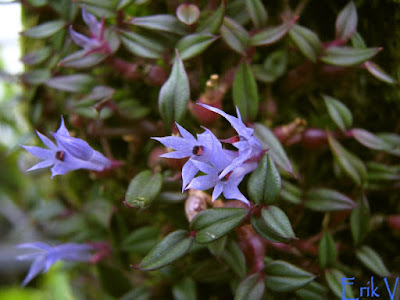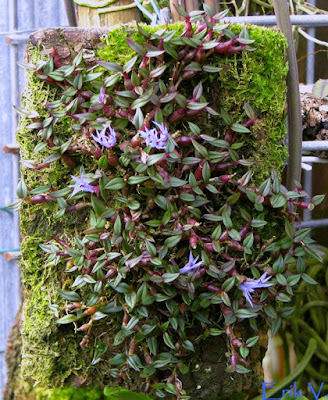Dendrobium parvulum is native to Sulawesi, Celebes and Papua New Guinea. They grows epiphytically on mossy, horizontal branches of trees in rain forests, at heights from 600 to 2650 m on the island of Bougainville, on the Solomon Islands, Fiji, Ponape and in northern Papua New Guinea.
Dendrobium parvulum, also called as The Small Flowered Dendrobium, Dendrobium delicatulum, Dendrobium delicatulum subsp. huliorum, Dendrobium delicatulum subsp. parvulum, Dendrobium minutum, Dendrobium parvulum subsp. huliorum, Dendrobium parvulum subsp. minutum, Katherinea parvula, Pedilonum minutum, Sarcopodium parvulum, is a species of the genus Dendrobium. This species was described by Rolfe in 1899.
IDENTIFY DENDROBIUM PARVULUM
Dendrobium parvulum is native to Sulawesi, Celebes and Papua New Guinea. They grows epiphytically on mossy, horizontal branches of trees in rain forests, at heights from 600 to 2650 m on the island of Bougainville, on the Solomon Islands, Fiji, Ponape and in northern Papua New Guinea. They are also found in eastern New Guinea at an altitude of 1400-1800 m, also on the Waigeo island just outside the west bank of New Guinea and on Mt.Klabat on the Minahassa peninsula in North Sulawesi (former Celebes), at an altitude of 900-1200 m.
It is a mini-miniature sized, warm to cold growing epiphyte, which can reach a height of 4.6 cm, with mat-forming, globose, ellipsoid, or ovoid, yellowish green to dark reddish, 0.2-1.5 cm long pseudobulbs carrying 2 erect to oblique, spreading, fleshy leathery, sometimes red flushed, terminal, succulent, ovate to elliptic to oblong-elliptic, acute to rounded, apiculate, 0.3-1.5 cm long leaves.
The Small Flowered Dendrobium blooms in the spring on a short, terminal, simultaneously 1 to 3 flowered inflorescence arising on both leafless and leafy stems carrying long lasting flowers. The flowers are 0.7-1.5 cm long. The sub-species of huliorum with large, yellow pseudobulbs has small, whitish-yellow flowers that usually self-pollinate before the flower opens. Sub-species delicatulum has red, pinkish-purple, purple or blue flowers. The subspecies of the parvulum have purple-pink flowers with a bright orange spot at the top of the lip. The subspecies of the parvulum and delicatulum both are rarely self-pollinate and have small, reddish shoots. The flowers cover the plant creating a colorful carpet. The ovary has 5 wings.
DENDROBIUM PARVULUM CARE AND CULTURE
Cultural information should only be used as a guide, and should be to be adapted to suit you. Your physical location; where you grow your plants, how much time you have to devote to their care, and many other factors, will need to be taken into account. Only then can you decide on the cultural methods that best suit you and your plants.
Light:
Dendrobium parvulum needs a light level of 25000-30000 lux.
Temperature:
Throughout the year the average day temperature is 25-26 ° C, night 14-15 ° C, giving a daily difference of 10-12 ° C.
Humidity:
In summer and autumn, The Small Flowered Dendrobium needs the average humidity of 70-75%, while in winter and spring it drops to 65-75%.
Substrate, growing media and repotting:
Dendrobium parvulum can be grown on cork or tree fern rootstocks, but you should ensure high humidity and watering in summer at least once a day. They can also be grown in shallow pots or baskets filled with any loose, quickly drying ground. Repotting can be done at any time, as long as new roots grow.
Watering:
For most of the year, water is moderate to heavy, only 2-3 winter months are a bit more dry. The plants should be constantly moist, but not wet. Additional morning fogging is very beneficial, especially during warm, bright, sunny days.
Fertilizer:
It is recommended to apply weekly or every 2 weeks 1/4-1/2 doses of balanced fertilizer to orchids throughout the year.
Rest period:
The amount of water in winter should be reduced. Dendrobium parvulum should dry a little between watering, but they can never dry out completely. Fertilization should be reduced or eliminated until spring, when the amount of water increases.















COMMENTS